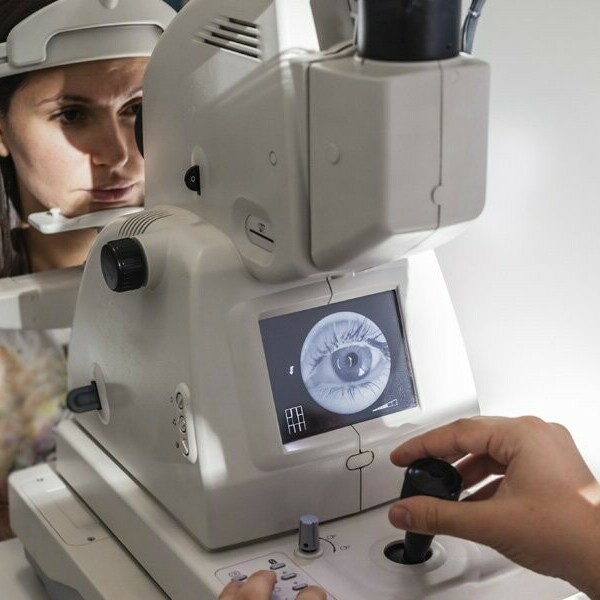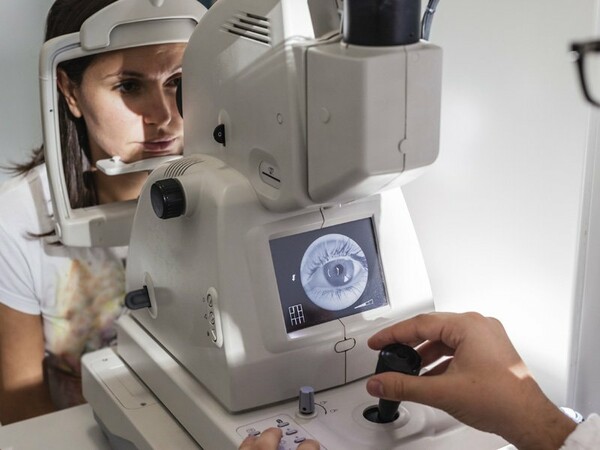Stories With VisionGlaucoma: Preventing the "Sneak Thief" of Sight
Posted on: Jul 20, 2016Glaucoma is sometimes called the "sneak thief" of sight, since it works slowly and vision loss is gradual.

As part of the Royal Alexandra Hospital Foundation's $4 million campaign for the Eye Institute of Alberta, we are pleased to present a series of articles on eye care featuring some of the Royal Alex's leading eye care specialists.
Glaucoma is sometimes called the "sneak thief" of sight, since it works slowly and vision loss is gradual.
While there are no known ways of preventing glaucoma, blindness or serious vision loss can be prevented if the disease is recognized in the early stages. Usually, glaucoma is silent, slow, and progressive. It typically affects side (peripheral) vision first and as it progresses, central vision is lost.
The underlying causes of glaucoma are not completely understood, but typically it is related to increased pressure in the eye. The pressure typically comes from a buildup of aqueous humor, the watery fluid that is naturally present in your eye. In a healthy eye, the aqueous humor is regularly drained. When glaucoma occurs, the eye’s natural drainage system doesn’t work properly, so the fluid gradually builds up in your eye, causing increased pressure.
Left unchecked, this pressure can damage the optic nerve, which is vital to good vision. This damage can lead to a loss of peripheral vision, also known as “tunnel vision,” and eventually to serious vision loss or blindness.
Dr. Karim Damji is the Clinical Section Head of Ophthalmology at the Royal Alexandra Hospital, and a known expert on glaucoma. His prescription for glaucoma treatment starts with regular eye exams.
"Most of the risk factors such as age, race, and family history for glaucoma are beyond your control," explains Dr. Damji. "As with any serious medical condition, early detection is the key," says Dr. Damji. "Regular, comprehensive eye exams are the best form of prevention against glaucoma and other eye diseases."
In general, a check for glaucoma should be done:
- Before age 40: every four years
- Age 40 to age 65: every one to three years
- Age 65 and older, every year
 Left: Dr. Karim Damji
Left: Dr. Karim Damji
Anyone with high risk factors should be tested every year after age 40. Those at higher risk include people of African descent, people with high myopia (near sightedness), people on steroid use (oral, inhalational, creams, eye drops) for longer than a few weeks, and people with a family history of glaucoma.
"The most common type of glaucoma – primary open angle glaucoma – tends to run in families," explains Dr. Damji. "You are at increased risk if you have a parent or brother or sister with glaucoma. If this is the case, you may need more frequent screening."
The signs and symptoms of glaucoma vary depending on the type and stage of your condition. In primary open angle glaucoma early symptoms are rare. In later stages, there may be blind spots in your peripheral or central vision. In the angle closure type where the pressure within the eye can rise very suddenly, early symptoms include blurred vision, halos around lights, eye pain and redness, and severe headaches.
If you’re at risk of developing glaucoma, medical experts recommend regular eye exams and a healthy lifestyle that includes regular exercise and a nutritious diet to improve your overall physical and mental well-being.
Currently, regular eye exams with an eye care professional (an ophthalmologist or optometrist) are the best form of prevention against significant glaucoma damage. Early detection and careful, lifelong treatment can slow the progression of the disease and allow people to keep their vision well into old age.

The Eye Institute of Alberta provides expert eye care for children, adults, and seniors. Designed to treat 12,000 patients a year, the Eye Institute of Alberta now provides care for more than 45,000 patients each year. This volume means challenges for both patients and staff. To ensure the very best patient experience at the Royal Alex, the Eye Institute of Alberta requires significant renovations. The Royal Alexandra Hospital Foundation is dedicated to raising $4 million to help the Eye Institute of Alberta to continue providing the very best in vision and eye care.
Learn More and Support the Eye Institute of Alberta
